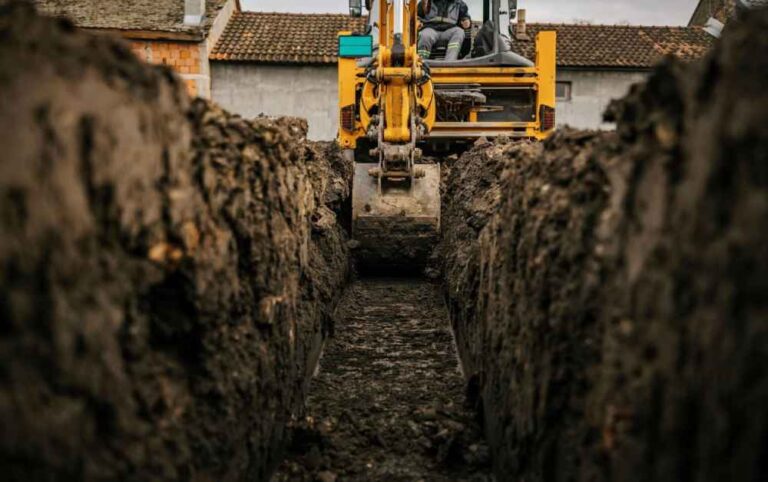Excavations are an essential but dangerous part of waste removal, carried out in order to remove contaminated soil from remediation sites. Without proper support, excavating on a large scale can lead to cave-ins and collapses that may not only damage assets and infrastructure, but endanger the lives of workers as well. To ensure the safety of their operations and employees, land owners and property managers should know what shoring is and the role it plays in the excavation process.
Shoring vs. Sheeting
Shoring and sheeting are the two most common protective systems employed at excavation sites. Though they perform the same function (protecting workers) they are different in scope. Shoring is used in deep excavation projects, where the depth of the cut makes it impossible to grade the soil back to its maximum allowable slope. The correct approach is determined by the soil at the dig site.
- Soil Type A. Cohesive soils such as clay, silty clay, sandy clay, and clay loam. Its maximum slope is 53° and it has a vertical height to depth ratio of 0.75:1, meaning that for every 9 inches you dig down, the soil has to slope back one foot in order to remain stable.
- Soil Type B. Soils with medium unconfined compressive strength such as silt, silt loam, and angular gravel. Its maximum slope is 45° and its vertical height to depth ratio is 1:1.
- Soil Type C. Unstable soils such as sand, gravel, and submerged soil. Its maximum slope is 34° and its vertical height to depth ratio is 1.5:1.
Sheeting is used in shallow excavations, where there is minimal risk of soil failures. Because it doesn’t support the face of the excavated area, it doesn’t prevent the trench from collapsing the way shoring does. Instead, sheeting uses trench shields and trench boxes made from aluminum or steel plates to prevent workers from being buried.
Excavation Shoring Techniques
Shoring systems provide direct, structural support to trench walls and excavation sites, creating a safe environment for teams working underground. There are several types of shoring, designed to meet OSHA regulations in all types of soil conditions.
- Hydraulic Shoring. Hydraulic pistons are placed against steel plates to create a controlled, outward force that holds the walls apart. A fast and easy technique used when workers need to finish a construction project quickly.
- Pneumatic Shoring. Similar to hydraulic shoring, it uses pressurized air rather than pressurized fluid to support the retaining walls.
- H or I-Beam Shoring. Also known as soldier pile shoring. Prefabricated steel beams are driven into the ground at regular intervals. Then wooden planks, steel plates, or concrete panels are inserted between them in order to hold back the soil.
- Secant Pile Shoring. Interlocking concrete piles are installed, creating a continuous wall around the excavation pit. The interlaced design holds back ground water, making it an ideal choice for wet or waterlogged areas. An adaptable technique frequently employed in urban settings, where workers need to operate in tight spaces.
- Diaphragm Walls. A deep foundation technique where a mix of concrete and slurry is pumped into a deep, narrow trench. Reinforcement cages are placed inside the trench before the mix is poured, ensuring the trench can withstand the heavy loads placed on it by the surrounding soil.
Though trench shoring is primarily used to protect workers, it’s also critical when working near existing structures. Stabilizing the soil prevents damage to adjacent buildings, allowing the people living and working nearby to go about their daily business without any serious disruption.
O6 Environmental Excavation and Shoring
O6 excavation teams take every precaution when removing and disposing of waste. We follow confined space entry protocols whenever employees work within excavations, with adaptive support systems that ensure work is carried out under the safest possible conditions, for the benefit of our clients, employees, and stakeholders. We understand the complexities of shoring and excavation, and are committed to providing fast, secure, and thorough waste disposal tailored to your needs. For expert advice and reliable services tailored to your specific site and needs, contact us today and start planning your project.


